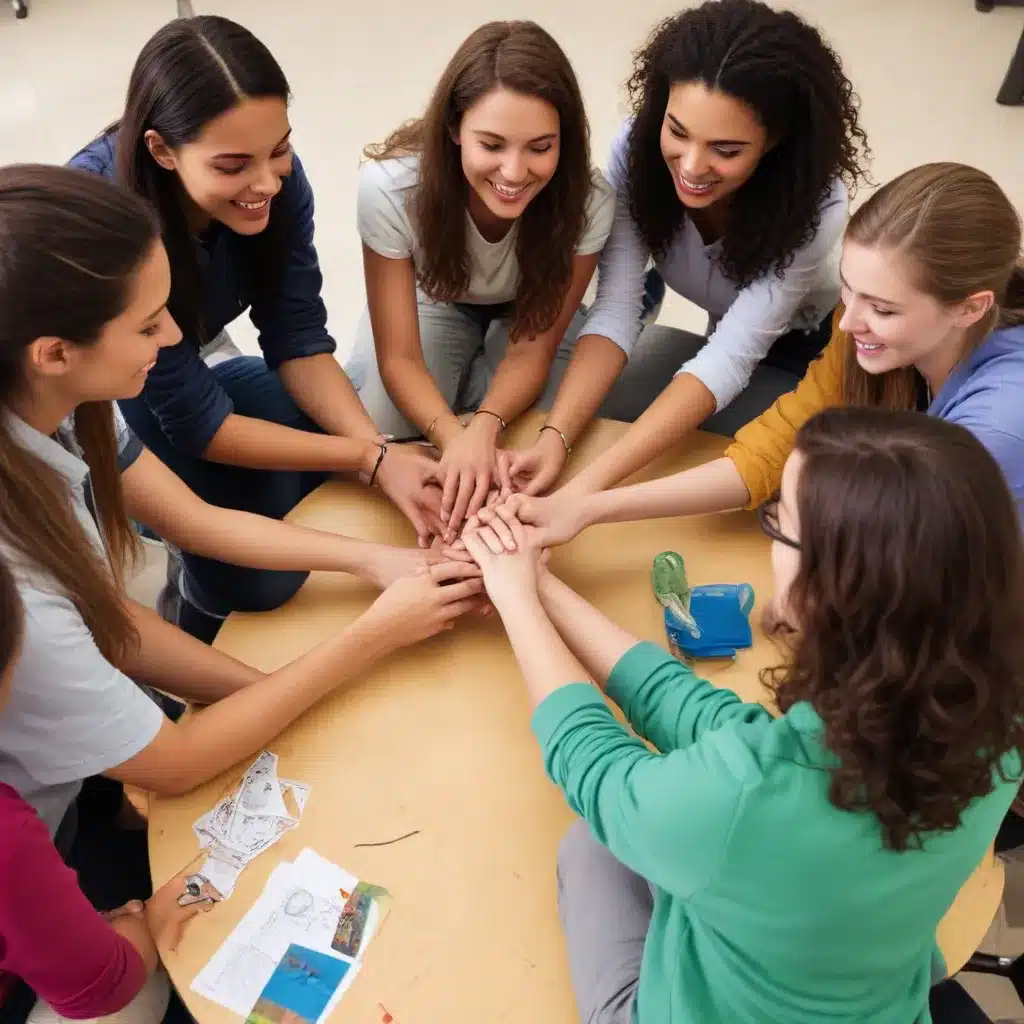
The Importance of Collaborative Learning
In today’s fast-paced and interconnected world, the ability to work effectively in teams and share knowledge has become increasingly crucial for academic, personal, and professional success. Collaborative learning, where students engage in collective problem-solving, peer support, and knowledge sharing, has emerged as a powerful approach to enhance learning outcomes and develop essential 21st-century skills.
At Stanley Park High School, we recognize the transformative potential of collaborative learning. By fostering a supportive environment where students can learn from one another, explore diverse perspectives, and collectively tackle challenges, we aim to prepare our pupils for the demands of the modern world. In this comprehensive article, we will delve into the key strategies and best practices for cultivating a thriving collaborative learning community within our school.
Strategies for Effective Group Work
One of the cornerstones of collaborative learning is group work, where students work together to achieve shared goals. To ensure the success of group-based activities, we recommend the following strategies:
Establish Clear Objectives and Roles
When forming groups, it is crucial to set clear, measurable objectives for the task at hand. Encourage students to collectively define their goals, understand their individual responsibilities, and establish shared accountability. By aligning expectations from the outset, you can help students stay focused and work cohesively towards a common purpose.
Foster Inclusive and Supportive Environments
Collaborative learning thrives in an atmosphere of trust, respect, and open communication. Encourage students to actively listen to each other, value diverse perspectives, and create a safe space for sharing ideas and constructive feedback. Emphasize the importance of inclusivity and discourage any form of discrimination or judgment within the groups.
Facilitate Structured Collaboration
Provide students with a framework for effective group collaboration, such as the Jigsaw method or other structured peer teaching techniques. These strategies guide students through the process of research, information sharing, and collective problem-solving, ensuring that each member contributes and learns from the experience.
Encourage Peer Feedback and Reflection
Regularly incorporate opportunities for students to provide constructive feedback to their peers and reflect on the group’s performance. This not only helps refine their collaborative skills but also fosters a culture of continuous improvement and accountability within the groups.
Leveraging Peer Support and Mentorship
Peer support and mentorship are powerful tools for cultivating a collaborative learning environment. By connecting students with knowledgeable and experienced peers, we can facilitate the exchange of ideas, the development of new skills, and the nurturing of supportive relationships.
Peer Tutoring and Mentoring Programs
Establish structured peer tutoring and mentoring programs that match students based on their strengths, interests, and learning needs. These one-on-one or small-group interactions provide personalized support and guidance, empowering both the tutors and the tutees to grow and excel.
Peer-to-Peer Knowledge Sharing
Encourage students to share their expertise and insights with their peers through presentations, workshops, or informal discussions. These knowledge-sharing sessions not only foster a culture of collaboration but also help develop valuable communication and leadership skills.
Peer Coaching and Accountability
Implement a peer coaching system, where students regularly check in with one another, provide feedback, and hold each other accountable for their learning goals. This cultivates a supportive network and encourages students to take ownership of their educational journey.
Fostering a Culture of Knowledge Sharing
Knowledge sharing is the cornerstone of a vibrant collaborative learning community. By creating opportunities for students to actively engage with and contribute to the collective knowledge base, we can unlock the power of shared learning.
Collaborative Learning Platforms
Utilize digital tools and platforms, such as Colleague Connect, that facilitate knowledge sharing, virtual collaboration, and seamless communication among students. These platforms can enable students to connect with peers, access resources, and engage in discussions beyond the physical classroom.
Student-Led Seminars and Workshops
Empower students to organize and facilitate their own seminars, workshops, or discussion groups on topics of their interest. These student-led initiatives not only deepen their understanding of the subject matter but also develop their public speaking, organization, and leadership skills.
Interdisciplinary Collaboration
Encourage cross-disciplinary collaboration, where students from different subject areas work together to tackle complex problems. This fosters a holistic understanding of the interconnectedness of knowledge and helps students appreciate diverse perspectives.
Collective Problem-Solving and Innovation
In today’s rapidly changing world, the ability to collaborate and solve problems collectively is crucial. By cultivating a learning environment that nurtures collective problem-solving, we can empower our students to become innovative thinkers and adaptable problem-solvers.
Design Thinking Workshops
Introduce design thinking workshops that guide students through the process of empathizing, ideating, prototyping, and testing solutions to real-world challenges. This collaborative approach encourages students to think critically, embrace experimentation, and develop creative problem-solving skills.
Hackathons and Innovation Challenges
Organize hackathons, innovation challenges, or other time-bound collaborative problem-solving events where students work in teams to devise innovative solutions to complex problems. These activities foster teamwork, critical thinking, and the ability to thrive under pressure.
Collaborative Research Projects
Encourage students to engage in collaborative research projects, where they work together to explore topics, gather and analyze data, and present their findings. This not only strengthens their research skills but also cultivates their ability to synthesize information and communicate effectively as a team.
Conclusion
By fostering a collaborative learning environment, Stanley Park High School is empowering our students to become engaged, resilient, and adaptable learners. Through effective group work, peer support, knowledge sharing, and collective problem-solving, we are equipping our students with the essential skills and mindsets needed to navigate the challenges of the 21st century.
As we continue to evolve our collaborative learning initiatives, we remain committed to providing our students with the resources, tools, and opportunities to thrive in a dynamic, interconnected world. Together, let’s embark on a journey of shared learning, innovation, and growth, where our collective strengths shine bright.

